Thanks to hypnotic suggestion, it was possible to create a model of weightlessness on Earth
What is needed for our country to begin and successfully continue the conquest of outer space? It turns out that in addition to powerful rockets, reliable descent vehicles, complex automation, life support systems in airless space, and the presence of brave candidates for the role of astronauts, it is also required… hypnosis. Without the help of specialists in the field of hypnology, many of the achievements of Russian cosmonautics would have been much less significant, if not completely impossible.
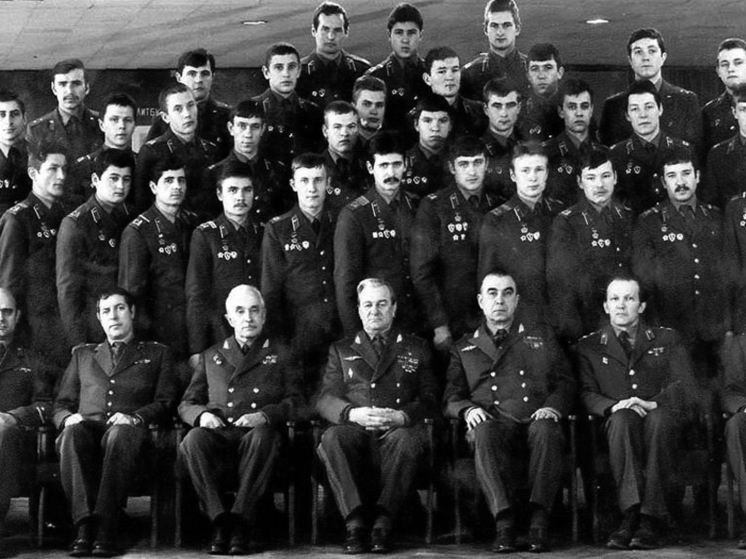 GNIIIIAiKM test team. 1983. In the first row are the leadership of the institute and the detachment.
GNIIIIAiKM test team. 1983. In the first row are the leadership of the institute and the detachment.
To be honest, I happened to hear about such a very exotic, even fantastic, in the opinion of some fellow citizens, page in the history of space exploration by chance. A veteran who participated in experiments necessary for manned flights more than half a century ago, during a conversation with him, mentioned: we conducted experiments using hypnosis.
From my interlocutor I learned about one of those people who played an important role in the preparation and implementation of the first Voskhod flights. and «Unions». This person's name — Leonid Grimak. The characteristics drawn from reference books, even in compressed form, look very vivid. Military doctor, psychotherapist, psychophysiologist, hypnotherapist, Doctor of Medical Sciences, professor, creator of the methodology for modeling functional states under the influence of hypnosis… He worked for almost a quarter of a century at the State Research Testing Institute of Aviation and Space Medicine (GNIIIIAiKM).
To the correspondent of «MK» managed to meet with a student of Leonid Pavlovich and his colleague at work in this “space” scientific institution. The head of the research laboratory of psychophysiology at Moscow University for the Humanities, one of the leading psychophysiologists, retired colonel, doctor of medical sciences, professor Vyacheslav Zvonikov spoke in more detail about Grimak’s breakthrough method, about the experiments that were carried out using hypnotherapy in preparation for manned flights.< /p>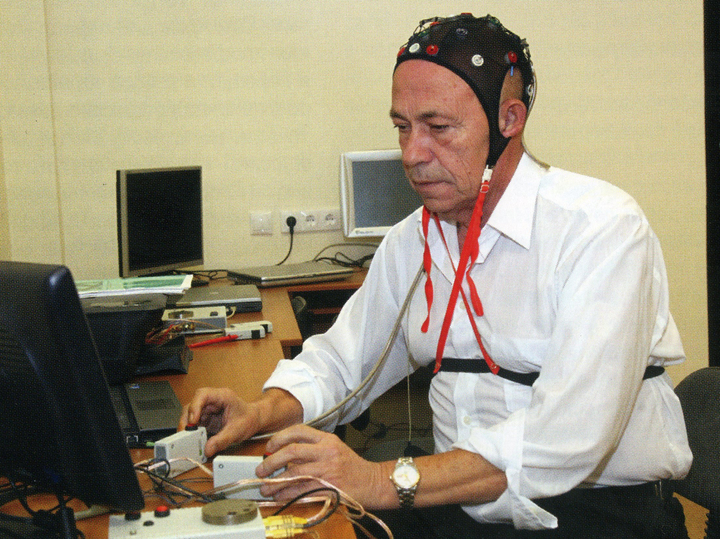 Vyacheslav Zvonikov. Photo: go-ra.ru
Vyacheslav Zvonikov. Photo: go-ra.ru
— I was lucky to work with this amazing specialist, talented scientist for a long time, starting in 1975. And Leonid Pavlovich Grimak himself came to the Institute of Aviation and Space Medicine in 1964, having previously served for almost 10 years as a doctor in airborne units.
After transferring to GNIIIIAiKM, he had to first of all “cut through a window” into hypnosis, to make it a full-fledged method of studying a person, modeling his state in relation to space flight. And Grimak did it.
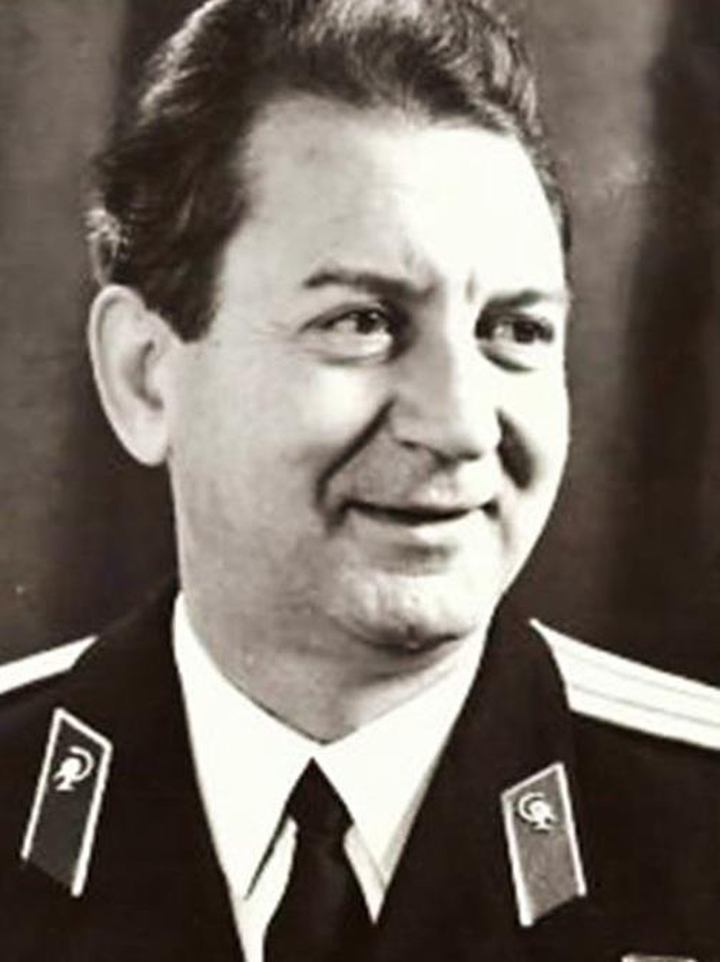 Leonid Grimak…
Leonid Grimak… 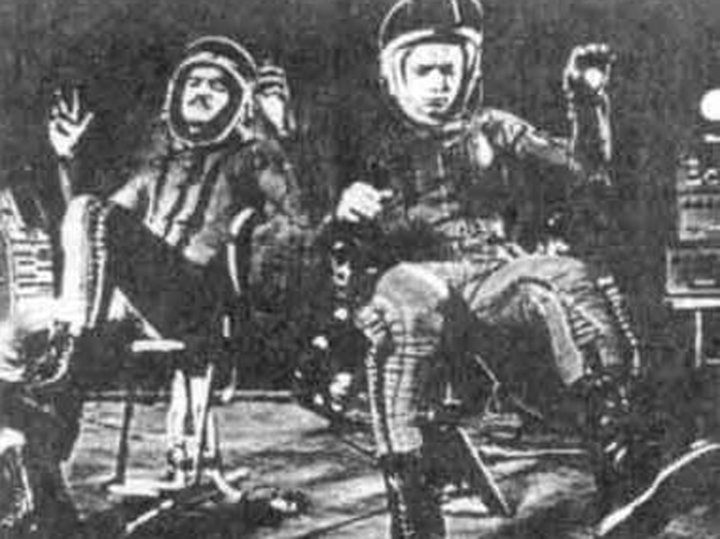 …and his experience in hypnotic simulation of weightlessness.
…and his experience in hypnotic simulation of weightlessness.
The research institute was very well equipped at that time. Few people know that the first group of cosmonauts was selected and tested not in Star City, but in this scientific center located near the Dynamo metro station. It was the institute’s employees who confirmed with their research that a person will be able to endure the conditions of being in space without any problems. So the development of the programs for our first manned orbital flights was carried out right here.
Leonid Pavlovich’s appearance at the institute occurred at that early period in the development of astronautics, when many questions remained open in relation to it — in medicine in general and psychophysiology in particular. Several aspects were especially concerning. Among them — psychological state of astronauts, the influence of weightlessness on the functional state of a person.
The institute had a large number of testing stands. Therefore, all factors relevant to future flights that can be simulated on Earth were previously tested in laboratory conditions. Moreover, many experiments were carried out in exactly the same room in which the astronauts had to be during the flight, — the same chairs, the same arrangement of equipment and controls on the consoles.
But there were moments that were difficult to study in earthly conditions. One of the problems was experiments with weightlessness.
There are several classical ways to simulate this condition. The first and closest to nature option — airplane flight along the Kepler parabola. However, it allows you to reproduce weightlessness for people in the compartments of the liner only for a very short time — only up to 40 seconds.
Another modeling option — long stay of a person in a lying position with a negative angle of 12 degrees. That is, the legs are above the level of the head. Another technique: the subject is transferred to a special support and transferred to a liquid medium — into the pool, where he is also in a state of weightlessness.
Using sensors attached to the body, doctors monitor the “weightless” person’s temperature, pressure, and heart rate. It is recorded how long a person is able to withstand such conditions and at what cost to the body. The experiment can sometimes last for 20 days, for a month…
All of the mentioned methods have disadvantages that limit the possibility of using them in modeling certain processes that simulate space flight conditions. For example, control of models of a descent module or a docking station.
Leonid Pavlovich Grimak entered the history of world science by proposing a completely new way to simulate weightlessness.
With the help of hypnotic suggestion, a situation of reduced body weight of the subject is created. But this person is not just in this state, sitting in a chair, — he must perform those professional actions that are practiced on Earth for astronauts, that is, perform tasks of controlling a spacecraft, tasks related to psychological testing.
As a rule, those people took part in experiments using the hypnomodel of weightlessness who have already experienced real weightlessness.
— Hypnosis introduces a specific program of human actions and a program of the emotional state in which he works.
In this case, the emotional state of the subject simulates his stay in weightlessness. And he carries out all the manipulations associated with solving the tasks assigned to him by research scientists after he is transferred by the experimenter to a post-hypnotic state.
Among other things, it was important to determine how long a person can remain in the state without additional reinforcement post-hypnosis.
— So he works and works, and then suddenly he says: my hands have again become the usual “earthly” ones. weight. And this is immediately visible from the readings of the instruments that monitor him using sensors attached to the body. After all, many parameters are recorded, ranging from the state of muscle tone to the activity of the cardiovascular system.
— GNIIIIAiKM had a unique opportunity to use testers for medical and psychological experiments. There was a system for selecting such personnel based on the same parameters by which astronaut candidates are tested. To ensure that we have highly suggestible people at our disposal, the selection program was later supplemented with special tests to determine suggestibility. But initially there were no such people when recruiting for space test missions. These people were tested for suggestibility after they had enlisted in the institute detachment. Some turned out to be suitable for hypnotic experiments, while others were not suitable and therefore were used in other experiments — those, for example, where only physical parameters were important… After all, a lot of experiments were carried out in a variety of directions.
Our research institute had two categories of subjects.
The first category — very young guys who were drafted into the army and who, after positive test results, voluntarily agreed to serve in the institute test team.
Second category — doctors, engineers, researchers of the institute (of course, satisfying all health requirements) who decided to expose themselves to extreme influences. Among them there were also highly suggestible people.
Participation in the experiments of institute specialists was extremely important. After all, not everything can be entrusted to, so to speak, a simple fighter. Researchers valued people who “understood” very much. — guys with higher or almost higher education who have analytical skills. Such a person will be able to describe his feelings experienced while performing a particular task, and this information will help to better understand where to move the experiment next.
Vladimir Shcherbinsky at one time was one of the “very young guys” that V. Zvonikov mentioned. This is what Vladimir Veniaminovich told the MK correspondent:
— The secret test squad began working in the summer of 1953. The 7th department was created at GNIIIIAiKM — testing department. And according to the documents of the Ministry of Defense, it was a separate military unit. Carefully selected conscript soldiers and sergeants were sent there — those who passed the selection medical commission in Moscow and whom doctors recognized as absolutely healthy. The guys signed a subscription about their voluntary consent to participate in the experiments and about non-disclosure of what they saw, heard, and experienced during them.
— At first, the subjects had the opportunity to work freelance at the institute. Therefore, I was familiar with Leonid Pavlovich. One day he was planning to conduct some kind of experiment, and a reliable tester, already tested by him in the field of hypnosis, turned out to be busy with another experiment. So I suggested: let’s try it. Grimak responded: “Let’s go to the Black Room, I’ll check you.” We called a black room a special room, all the walls of which were black, and the windows were covered with thick curtains; it was convenient to conduct hypnotherapy sessions there. The suggestibility test turned out to be successful, and since then Grimak has chosen me more than once to conduct his experiments.
When the time came to join the army, I thought that I was done with working at the research institute. However, it turned out that the scientists there had their eye on me. At their request, the institute's management sent a request to the military registration and enlistment office, and as a result, I was sent to serve as an urgent member of the test team.
To be honest, I don’t remember the details of the experiments using hypnosis very well due to the passage of time. But one of the episodes is etched in my memory, not related to the direct conduct of experiments “for space.”
One day Leonid Pavlovich — how does it sound in the language of professionals — put me into a hypnotic trance. He ordered both hands to be extended forward, and after that he began to place thick volumes of the Great Soviet Encyclopedia on them. A stack of eight, it seems, volumes was formed, each weighing one and a half kilograms. And I, being under hypnosis, calmly held them at arm's length. Then Grimak removed the books and brought me back to normal. And when I came to my senses, he, as if nothing had happened, asked me to take these eight volumes from the table at once and move them to another place. So, I simply couldn’t cope with such a burden!
— One of the experiences — working with a manipulator, — Vyacheslav Zvonikov said. — Then — this is 1982–1985 — in the USSR, in addition to the well-known “civilian” shuttle «Buran» The design of a military shuttle was also underway. Among its intended functions — capturing space objects using a large manipulator.
But how will an astronaut behave when he is in such a ship? Will he be able to control this manipulator? How big of a difference will there be in a person's motor skills in zero gravity compared to their normal state? To find out, they used the method proposed by Grimak.
Having immersed the subject in a hypnotic trance, it was then necessary to transfer him to the so-called post-hypnotic state. That is, in a state when a person’s eyes are open, he can move and control equipment, including quite complex ones.
We have worked through this procedure. And based on this procedure, it was possible to implement the tester’s actions with the manipulator. True, for the experiment, they did not make a full-size 15-meter “arm,” but a smaller model of it, 1.5 meters long. But even such a mechanism was quite difficult to manage. The task assigned to the tester, who was under hypnosis, was to work with different objects — their movement, precise installation according to pre-applied marks…
As a result, it was proven that a person is able to perform these actions with the help of a manipulator even in zero gravity. Based on the results of the experiments, recommendations emerged on how to prepare future crews for the military shuttle so that this process would be as effective as possible.
Among the experiments conducted at the Research Institute of Aviation and Space Medicine, many were “acute” ones. — as we called them. That is, associated with very serious loads on the test subject’s body — physical, mental…
I will mention stress modeling here.
It has been proven that we experience the most severe stress when a real threat to life arises — no stronger! It is clear that such stress arises in combat conditions. But it is equally clear that when bullets are whistling around, explosions are thundering, there is no way to take people’s blood for analysis or take an encephalogram.
Nevertheless, identifying objective mechanisms of stress development is extremely important. And not only to determine — Now this person has lost his strong-willed qualities, but also to understand what will happen to him next.
At the institute we simulated a state of stress. Using hypnological methods, they created a situation of the same strength for the psyche of a person located on the test bench. And then it was possible to study the electrophysiological, biochemical processes and energy exchange processes that arose in his body without interference.
Was invented — already by me — explosive decompression model: when an aircraft or lander depressurizes. This simulation took place on a simulator — mock-up of the descent vehicle. Of course, no decompression actually occurred during the experiment. It was created mentally by a person who had previously physically experienced a similar external influence on himself, knew what the sensations were, what its consequences were. Thanks to the use of hypnotherapy, the participant in the experience fully believed that he was suffocating, that he lacked oxygen…
Of course, everything that happened to the subject who was struggling with “depressurization” had to be carefully monitored, recording the parameters of the state of his body exposed to stress. We worked in large teams during such experiments — in the room where the experiment took place there were doctors, psychologists… Many of them — youth — This was the first time something like this had been observed. And when they saw what was happening to the person who was instilled with this state, they saw convulsions, loss of consciousness… This picture made a very strong impression.
One of the most “sharp” for its participants — an experiment associated with the so-called continuous operation mode. It is also practiced by astronauts, as is the situation of survival in different climatic zones. But if survival training can sometimes be seen in documentaries about space explorers, then the tests associated with the mode of continuous activity are never shown to the general public.
This is a three-day experiment in which a person is deprived of sleep and must constantly — be actively engaged.
— Three days — this is the limit. I myself took part in such experiments several times. It was important for me to understand how a person feels in such a situation, how, after long hours of continuous wakefulness, he begins to “blow the roof off.” I can confirm that it “blows away” really, — when various kinds of visions arise, when a person is sitting, but it seems to him that he is moving… That is, a number of mental characteristics accompany such an experiment.
At the same time, an external influence on the psyche can radically change everything. We checked, among other things, which method allows the subject to maintain working capacity to a greater extent in the event of such an extreme situation for his body.
In the course of multi-day experiments, we tried various ways to normalize the condition of the test subjects isolated in the isolation chamber. Starting from showing them erotic films and ending with the use of pharmacological drugs. So, the most effective way to cheer up turned out to be autogenic training — method of mental self-regulation. It was he who gave the best effect of increasing performance: a person could continue active activity, although before that he was already, as they say, “ready.” However, erotic films, it must be admitted, also provided good results.
Experiments were conducted aimed at increasing the astronaut’s performance. There is a theory that the psyche plays a big role in the development of fatigue — disruption of mental regulation leads to acute phases of the development of fatigue.
To prove this, the Soviet scientist-physiologist David Shatenstein once carried out an interesting experiment using an ergograph — a medical device used to determine the dynamics of muscle performance and record this information. The laboratory setup was equipped with a cable thrown over a block, from which a weight was suspended. Let's say 16 kg. The subject was asked to lift the weight over and over again with one hand using a cable — and so on to the limit of one’s capabilities, that is, until the hand refuses to move. At the same time, pulse, blood pressure and other indicators were monitored. For his experiment, Shatenstein specifically chose highly suggestible people and immersed them in hypnosis. After a person’s arm completely failed, the experimenter suggested to him that instead of a heavy weight, a light basket with flowers was now tied to the cable. And then the subject continued to work for some time — pull this weight. Here is a clear confirmation of the role of the psyche in the activation of performance.
— Can. Self-hypnosis is used for this. It has been proven that suggestion and self-hypnosis (or psychological self-regulation, autogenic training) — the links of the same chain, the mechanisms of influence on the body are the same. Another question is that a person — in our case, the astronaut — must be prepared to use these techniques. To do this, we carried out appropriate training work with people who were about to go on a flight.
— No not like this. The fact is that the potential “conquerors of stellar space” there are a lot of other requirements.
— The peculiarity of self-hypnosis is that 80-90% of normal people on the planet are able to master all this if they have the appropriate motivation. And hypnosis is needed to practice the techniques of such self-hypnosis.
— As far as I know, they did not simulate any processes using hypnosis.
— The fact is that the things mentioned — some kind of experiment. This is all designed for a certain failure of equipment during flight, for a sharp deterioration in the cosmonaut’s well-being, as well as for other emergency situations where quick help is required. But the Americans — they are, so to speak, more self-confident. Although, as the emergency situation with the death of the shuttles shows, we are by no means immune from technical failures.
It is unambiguous to state whether their astronauts are better or worse prepared compared to our cosmonauts, — I don’t know, I don’t know… Another thing is that we always had higher requirements, there was some kind of reinsurance, especially in the case of selecting the first candidates for the flight.
I believe that in any case, in terms of understanding the mechanisms of mental influence, we are at least one step ahead, but ahead of the Americans. Now they have become interested in — fortunately there is money, — guys appeared who inserted chips. But this “trick” has nothing to do with the transfer, strictly speaking, of distant information — directly from person A to person B, located in different rooms. In the case of the experiments we conduct, this is done without any implanted chips, but with the help of activation of mental images.
Here we come to the question of continuing those studies using hypnosis that were once started by Leonid Pavlovich Grimak, &mdash ; including in relation to astronaut flights.
— Yes. We have created, for example, a special methodology for selecting and preparing people for remote interaction. New techniques are being developed to speed up such training and expand its capabilities.





















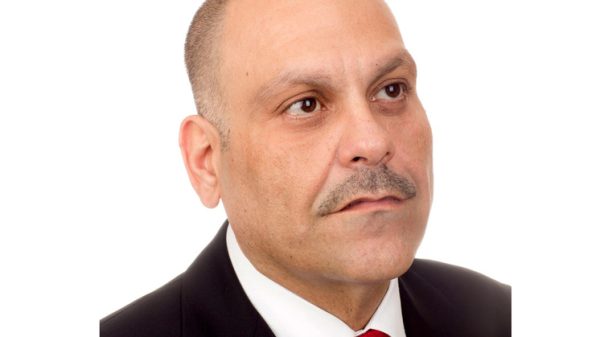



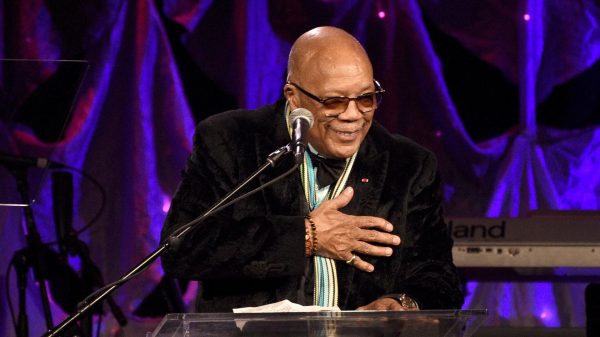

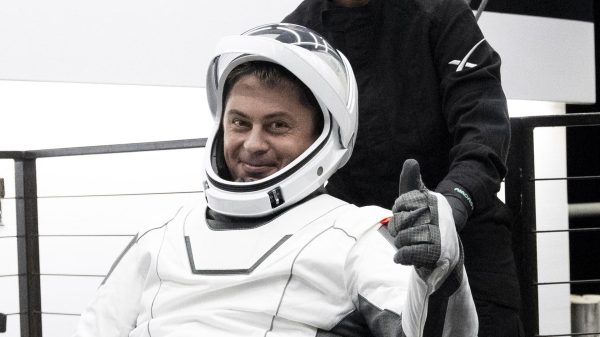
















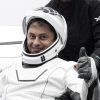











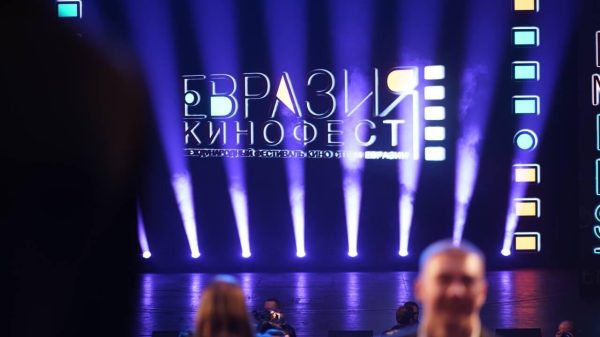
Свежие комментарии